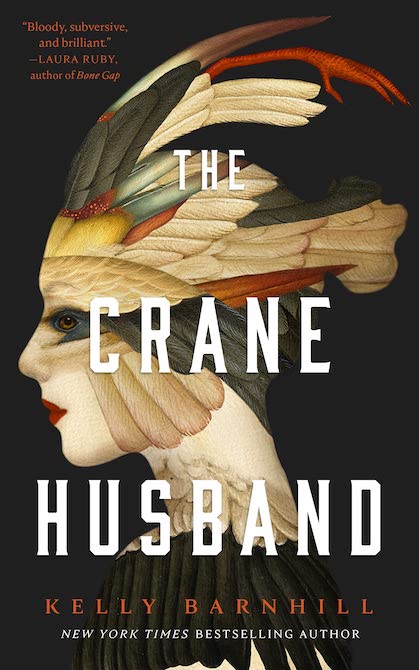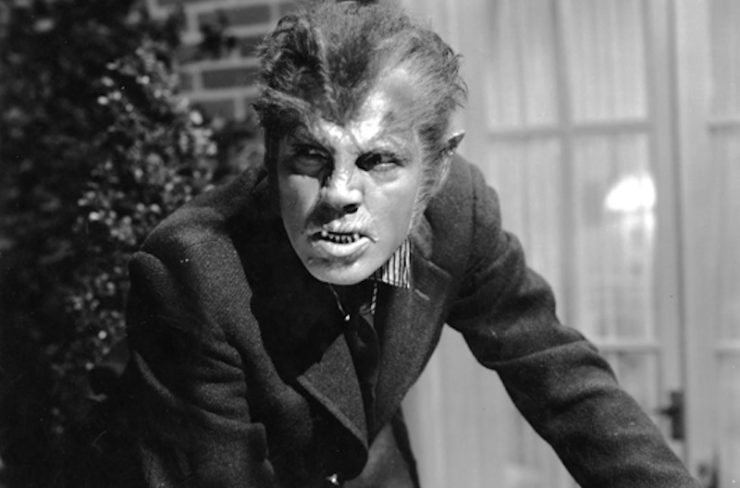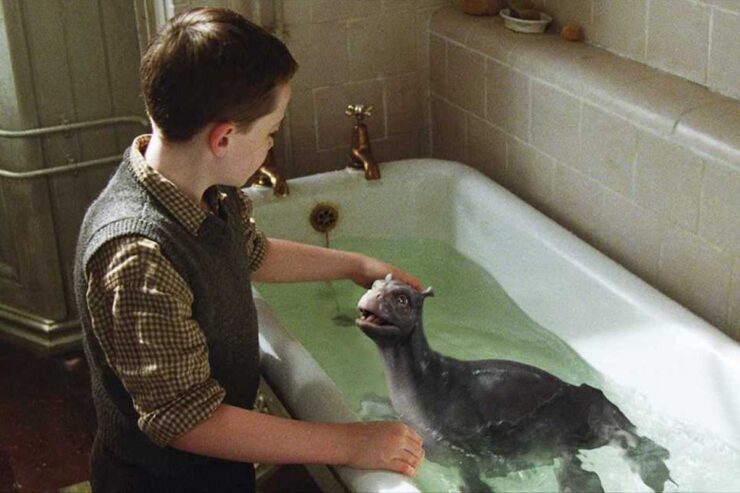The 1941 film starring Lon Chaney, Jr is in many ways the origin of the werewolf genre. But there is an earlier example, from 1935. It’s not nearly as well known; its star, Henry Hull, never achieved the cult status that Chaney did.
It’s not a bad little film at all, and in some ways it’s closer to what we now regard as canon. The change (in the film it’s called “transvection”) happens monthly during the three nights of the full moon. It’s caused by the bite of a werewolf. According to the weighty tome the protagonist consults, “the werewolf must kill at least one human being each night of the full moon or become permanently afflicted.” It’s not totally clear whether this means he’ll be permanently relegated to werewolf form, or whether he’ll only be affected for three nights out of every lunar cycle.
In any case, the story begins in the wilds of Tibet, where an English botanist, Dr. Wilfred Glendon, and his traveling companion, Hugh Renwick, have been searching for a rare flower that only grows in Tibet. This flower blooms under the full moon in a valley that the locals believe is the abode of demons. None of them will go near the place, and a random Catholic priest who happens by warns them against it, but Glendon of course doesn’t listen.
Just as he finds what he’s looking for, a werewolf attacks and wounds him, but not fatally. In the next scene, we find him back at home in London in his very modern and scientific private laboratory on his handsome estate. The specimen made it back, it’s growing, it has buds, but Glendon hasn’t been able to get the buds to open under his nifty artificial-moonlight lamp.
Glendon is married to a beautiful woman, Lisa, and he moves in the kind of social circles one sees in romantic comedies of the mid-Thirties. A crowd of gay young and not so young things flits from party to party, with the occasional moonlight horseback ride. Prominent among the party people is Aunt Ettie, who totes her little dog everywhere, indulges frequently in adult beverages, and lives, as she says, between a slum and row of pubs. She makes it seem like the height of coolness as we would say these days, but is she possibly making the best of limited funds?
An exotic stranger appears at one of the rounds of parties, a Dr. Yogami. He hails, he says, from the University of Carpathia, and he’s vaguely Asian in name and appearance. The actor who plays him, Warner Oland, who was actually Swedish-American, is better known for playing Charlie Chan.
Dr. Yogami has come to warn Glendon about what’s about to happen to him, and to find out whether Glendon has managed to get the flower to bloom. He has tried but failed.
Glendon, it turns out, has succeeded. Yogami hints that he is the werewolf who bit Glendon, and hints a little more broadly that they should both try to use the flower as an antidote to the curse. There are foreboding glances and portentous words and weird, creepy groping of Glendon’s wounded and still healing arm.
Glendon is a Western scientist, a man of reason, and he scoffs at Yogami’s warnings—until the fake-moonlight lamp causes his hand to become very, very hairy. He just happens to know what to do at that point: he cuts the flower that has bloomed, and stabs his hand with it, which reverses the change—but only temporarily. When the real moon rises, he transforms into a wolf-man.
He explicitly does not turn into a wolf. As Yogami intones, “The werewolf is neither man nor wolf but a Satanic creature with the worst qualities of both.”
We soon get to see it happen on screen, as Glendon becomes a very, very hairy man with fangs and a compulsion to kill the thing he loves most. He seems to keep at least some of his human intelligence: he tries to stay away from Lisa, and when he kills, he chooses women of loose morals, a streetwalker and a woman who is having an affair with a married policeman. In the end, while still in werewolf form, he is able to deliver a noble and self-sacrificing speech.
The killings bring out the full force of the law, which happens to be connected to Glendon’s social circle—both Aunt Ettie and Lisa’s childhood friend Paul are related to the chief of Scotland yard. The police are hunting an animal, and scoffing at anyone–including Paul–who proposes that the killer might be a werewolf.
Glendon tries to isolate himself from his family, first by renting a room near Aunt Ettie’s house, then by retreating to Lisa’s family estate. But the room isn’t secure enough to hold him, and Lisa and Paul just happen to stop by the old homestead in time for her to come face to face with her transformed husband. Lisa is simply horrified. Paul suspects that the monster is Lisa’s husband.
There is screaming and running and fleeing and drama, and at the end, inevitably, a bullet ends the werewolf’s life. In death he transforms back into his human form.
That part of the plot is similar to that of The Wolf Man, and the ending is the same. The werewolf never breaks the curse. Instead, the curse destroys him.
Buy the Book


The Crane Husband
There’s no need for a silver bullet here. Ordinary ammunition is sufficient for the purpose. The antidote to the curse, the plant Glendon traveled so far and long to find, is no cure, only a temporary remedy, and it fails in the end. Except for the first one, its flowers wither and die before they can be used, or bloom too late.
Lon Chaney’s character, Larry Talbot, is somewhat of a sexual predator, but in general he’s a bluff and hearty, uncomplicated sort. Dr. Glendon is a cold, haughty person, obsessive and humorless, and he is abusive toward his wife. He’s not so much a predator as a standard-issue movie scientist, fixated on his work and notably lacking in social skills. He has a garden full of carnivorous plants, including one triumph of special effects, a pulsing, tentacled thing to which party guests feed live mice.
Beside that, the Tibetan flower is rather dull. It’s more impressive in concept than in execution. Mostly it’s a pretext to put Glendon in a position to be bitten by a werewolf.
It’s interesting to compare this film to the Chaney version. Dr. Glendon lives in a world of wealth and comfort, with leisure to travel and explore, and the means to indulge his scientific passion. Larry Talbot is the heir to a castle, and has come from California to claim it, but all the action of his story happens within the boundaries of a single English village. There’s no mention of the war that was well under way in Europe by 1941; the characters live in a bubble, constrained by class and culture. The flower here, the wolfbane, is an indicator of the season, a sign that the werewolf curse may become active. There is no remedy for the curse; once a man has it, he’s doomed.
The special effects of the earlier film are rather lovely for the time. Both of the werewolves strongly resemble later incarnations. They look like Chaney’s wolf man—but even more, like Eddie Munster. There are even real wolves in the film, in cages in the London Zoo. They react powerfully to the werewolf’s presence, and serve as a kind of foil. They show us what the real wolf is like, and create a contrast with the “Satanic creature” Glendon has become.
I actually prefer this film to the Chaney version. It has more scope, though also some unfortunate and dated orientalism, and it’s more authentically English. It has a broader range of characters and a lighter, breezier tone, with intervals of comic relief. Glendon is much less likable than Larry Talbot, but he’s a somewhat more rounded character. He has a little more control over his curse, though it doesn’t help him in the end. He’s still a monster. He still has to pay for what he’s done.
Judith Tarr is a lifelong horse person. She supports her habit by writing works of fantasy and science fiction as well as historical novels, many of which have been published as ebooks. She’s written a primer for writers who want to write about horses: Writing Horses: The Fine Art of Getting It Right. She lives near Tucson, Arizona with a herd of Lipizzans, a clowder of cats, and a blue-eyed dog.














